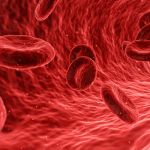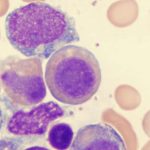Seeing Red: Bleeding Disorders Explained
Everyone bleeds. The average person bleeds for about 2-7 minutes and clots in 8-15 minutes. This is the first step in the healing process. However, not every person bleeds and clots this way. People who do not fit into these parameters typically have underlying issues like bleeding disorders.
There are many bleeding disorders out there and over three million Americans live with one. Once you have a bleeding disorder, you can live with it for the rest of your life. Some people live with a bleeding disorder and never know about it. We do not want you to worry. That is why we created this guide explaining bleeding disorders.
What is a Bleeding Disorder?
In short, a bleeding disorder is a condition that causes a person’s body to have a hard time clotting properly. Clots essentially help plug up any holes that let blood escape from your body like a scrape that develops after someone falls on a hard surface. A person with a blood disorder will continue to bleed unless this issue is controlled with medication or other medical assistance.
What are the Broad Categories of Bleeding Disorders?
Doctors and medical professionals have grouped bleeding disorders into these categories:
- Genetic.
- Platelet.
- White blood cell.
- Red blood cell.
Genetic Bleeding Disorders
Genetic bleeding disorders are those that are passed down from a biological parent. Typically, family members will know about their illness and will notify their relatives. Once you know you have a genetic bleeding disorder, you must add it to the family history section any time you fill out medical paperwork at a doctor’s office or hospital. Suppose you learn later that a bleeding disorder runs in your family. In that case, you need to update your family history form so medical professionals know if your issues or concerns revolve around any possible genetic disorders.
Some common genetic bleeding disorders include:
- Sickle cell anemia: A common genetic bleeding disorder that affects many people with African, Sicilian, South or Central American and Indian backgrounds is sickle cell anemia. This disorder causes the red blood cells to be sticky and stiff and block blood flow. If not correctly monitored, people can experience severe organ pain and organ failure.
- Thalassemia: This disorder mostly affects Mediterranean people. Many people do not have symptoms, but others may need blood transfusions for the rest of their lives.
- Factor V deficiency: This condition is also known as Orwen’s disease; Factor V is a rare bleeding disorder that occurs due to poor blood clotting, especially after an injury or surgery. Its name indicates which protein is at fault for the condition.
- Factor VII deficiency: Another bleeding disorder issue is Factor VII deficiency. Just like with Factor V deficiency, a lack of this protein causes clotting issues.
- Factor X deficiency: As another rare genetic bleeding disorder, there is an issue with the Factor X protein. Typically, people with this disorder bleed longer than the average person.
- Factor XI deficiency: This rare genetic blood disorder causes reduced levels and insufficient activity of the Factor XI blood protein. People with Factor XI do not bleed faster but do have a harder time clotting after deep cuts, mainly from surgeries.
- Glanzmann disease: This disorder is inherited and causes impaired platelets to have problems with clotting. It can cause life-threatening issues if not treated, specifically abdominal bleeding.
- Hemophilia A: Hemophilia A is an inherited bleeding disorder that causes people to not clot properly due to a lack of Factor VIII. People with this disorder bleed more than average, especially during routine procedures like dental appointments.
- Hemophilia B: Another rare genetic bleeding disorder is Hemophilia B. People with this disorder have insufficient levels of clotting Factor IX.
- Von Willebrand 1, 2, 3: Von Willebrand disorder is a bleeding disorder caused by the lack of a protein that helps your blood clot. There are three different forms:
- Type 1 is the most common and causes you to have lower than average protein amounts in your body.
- Type 2 has the usual amount of protein, but it just does not work correctly.
- Type 3 is the most dangerous, and if you have it, you do not produce the protein at all. It can lead to severe bleeding issues that can even cause death if not taken care of by medical professionals.
- Prothrombin deficiency: Just like many of the others, this disorder causes there to be a problem with the clotting process. It can cause prolonged bleeding after an injury, teeth pulling and menstruation.
Platelet Disorders
Platelets help your body control bleeding. It is essential to have normal to high platelet counts, especially after surgeries, injuries, cancer and any other major health issues. The lower your platelet count is, the higher chances you have of bleeding out and dying. Here are some of the most common platelet disorders.
- Idiopathic Thrombocytopenic Purpura (ITP): This is a condition in which a person develops a low count of platelets in the blood. There is no known cause of why it happens. Plus, there are not many symptoms as well. You may notice abnormal bruising or small red dots on your skin.
- Disseminated Intravascular Coagulation: Small blood clots develop throughout the bloodstream, which blocks small blood vessels. This increased clotting decreases platelets and proper clotting.
- Congenital Platelet Function Defects: This disorder is typically passed down from a family member. It causes you to have decreased platelet function.
- Acquired Platelet Function Defects: This type of disorder prevents the blood platelets from clotting or otherwise working as they should. Since a person can acquire it, it is not present at birth, and instead, you grow into having it.
White Blood Cell Bleeding Disorders
Specific bleeding disorders, whether they are genetic, platelet or not, affect your white blood cells. Your white blood cells help your body fight against viruses and bacteria. If you have a bleeding disorder that affects your white blood cells, it can drastically weaken your immune system. Some of the most common white blood cell bleeding disorders are:
- Lymphoma: This is a common form of blood cancer that develops in the lymph system. The white blood cell becomes malignant and rapidly spreads throughout the body. Doctors treat it with chemotherapy and radiation.
- Leukemia: Another common blood cancer that affects the white blood cells is Leukemia. The white blood cells become malignant and then spread throughout the bone marrow. You can treat it with chemotherapy or stem cell transplantation to extend your life or cure it.
- Multiple myeloma: This blood cancer causes the plasma in cells to become malignant. The plasma cells multiply and release dangerous substances into the body that over time cause organ failure and damage. There is no cure, but there are stem cell transplants or chemotherapy to prolong your life.
- Myelodysplastic syndrome: This is a family of blood cancers that affects the bone marrow slowly. Eventually, it can cause severe Leukemia. Some of the treatments you can have are blood transfusions, chemotherapy and stem cell transplants.
Red Blood Cell Bleeding Disorders
Some bleeding disorders affect your red blood cells. Your red blood cells distribute oxygen all over your body and remove carbon dioxide. Bleeding disorders that affect your red blood cells affect the entire body’s tissues. It can even get to the point where your body shuts down. Here are the most common red blood cell disorders:
- Anemia: Anemia is characterized by a low count of red blood cells. Most people who have anemia do not show any symptoms. In more severe cases, people have fatigue and are pale.
- Iron-deficiency anemia: This blood disorder is characterized by both a low red blood cell count and iron. Typically, those with this disorder need to take iron pills or have a blood transfusion to increase their red blood cell count and iron level.
- Anemia of chronic disease: Chronic disease can bring on anemia-like kidney disease. Patients with this type of anemia typically take a synthetic hormone to increase their red blood cells.
- Pernicious anemia: This type of anemia causes people not to absorb enough B12 from their diets. Patients may take B12 vitamins to help with this type of anemia, but may also have to explore a variety as methylation issues may be the culprit.
- Aplastic anemia: Some people do not produce enough red blood cells in their bone marrow. Many conditions and diseases can cause this issue like HIV, hepatitis or Epstein-Barr. If you have aplastic anemia, you will need to take medications or have a blood transfusion or bone marrow transplant to help with the disorder.
- Autoimmune hemolytic anemia: This type of anemia causes an overactive immune system, which means the body destroys red blood cells. You may have to take medications to suppress your immune system to fight this condition.
We understand how confusing, traumatizing and harrowing bleeding disorders can feel. A significant change in your health can affect your mental well-being as well. We want you to know you are not alone. Always know that there is support out there. You can join a support group, see a counselor or talk to your doctor for more ways on how to properly cope. If you think you may have a blood disorder or have one and need help, schedule an appointment or give us a call today.





